How To Choose The Perfect Betta Fish Tank
Selecting the ideal Betta Fish tank is crucial for creating a thriving habitat for your aquatic companion. The perfect Betta Fish tank isn’t just about aesthetic appeal; it’s about crafting a serene and supportive environment that contributes to the health and happiness of your betta.
A well-chosen tank is the cornerstone of a beautiful and tranquil space that enhances both your betta’s life and your enjoyment of it.
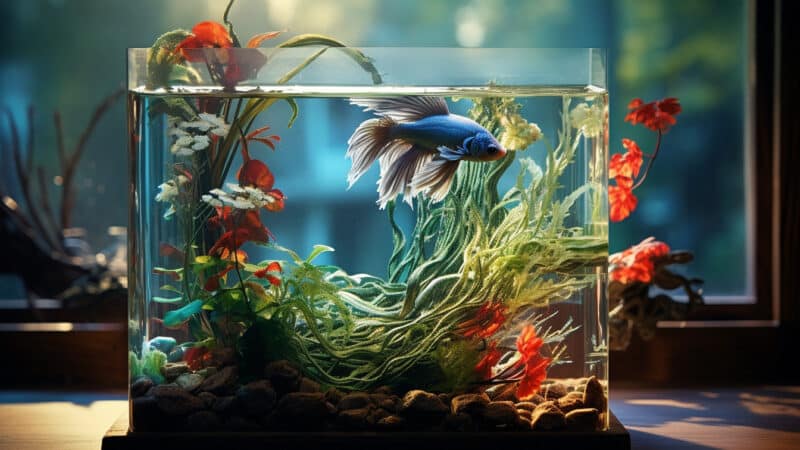
So, whether you’re a seasoned betta enthusiast or just starting, choosing the right tank is essential for ensuring your betta lives a long and happy life.
We’ve got some great tips on how to choose the perfect betta fish tank! Our post covers everything you need to know to make the right choice, from tank size and shape to filtration and accessories. We’ll also help you decide between glass and acrylic tanks, and share some important maintenance tips to keep your betta fish happy and healthy.
Table of Contents 🦑
Siamese fighting fish Natural Habitat
To understand how to create the best environment for our pet betta fish, first, we need to know his or her lifestyle.
Betta fish also known as the Siamese fighting fish, originally come from the natural environment of tropical Southeast Asia. In the wild, these little guys live in shallow streams and rice paddies where they can find plenty of hiding places among the plants and rocks.
So, when you’re setting up a betta fish tank, keep in mind that recreating their natural habitat is essential for their well-being.
Providing enough space, hiding places, and even some live plants in the tank can make your betta fish feel right at home. Who knows, with a proper betta fish tank setup, your little betta might feel like they’re living in their little slice of paradise!
Importance of the size and shape of Betta Fish Tank
Are you ready to set up your first betta fish tank? Don’t make the mistake of putting your new pet in a tiny fish bowl, Betta fish need enough space to swim and explore their environment.
When it comes to betta fish tank setup, size, and shape matter, Betta fish tanks come in various shapes, from rectangular to circular, and each offers its unique benefits.
So, whether you go for a sleek and modern tank or a classic round shape, a proper one should provide your little fishy friend plenty of room to play and thrive, choose at least 10 gallons fish tank, but a bigger tank is always better in this case, smaller tanks, no thanks, trust us, your betta will thank you for investing in a comfortable and spacious betta tank.
Betta Fish Tank Size for Mates
Choosing the right tank size is crucial when considering adding Betta tank mates to your betta’s tank. A betta’s tank should have enough room to accommodate the new additions without overcrowding the tank’s ecosystem.
A community tank with various fish and non-fish mates can add to the tank’s visual appeal, but it is essential to do research and understand the minimum tank size required for each fish.
Can Two Betta Fish Coexist In The Same Tank?
Male betta fish are generally aggressive towards other bettas and sometimes even with other fish types.
Two male bettas should not be housed together in the same tank, It’s best to keep them in separate tanks to ensure their well and to prevent any fighting or stress. However, female bettas tend to be less aggressive than male bettas.
They can still exhibit territorial behavior, especially during breeding or when introduced to a new tank, but they can sometimes live together in sorority tanks, in groups of three or more, it’s important to ensure that they have enough room and that the tank is set up properly to prevent any aggression or dominance issues.
Betta Fish Tank Mates
Several types of friends can live with betta fish, including peaceful community fish like neon tetras, harlequin rasboras, and corydoras catfish. Shrimp and snails can also make good companions for bettas. It’s important to avoid fin nippers and aggressive fish that can harm bettas, such as some species of cichlids or barbs.
When selecting mates for your betta fish, make sure to consider the requirements for all species and ensure that the tank population is balanced to support the tank’s ecosystem.
Overcrowding the tank can lead to aggression and territorial behavior among the fish population, causing undue stress underwater. So once again, make sure to do your research before creating a community tank
Top 10 Compatible Tank Mates For Your Betta Fish
- Neon tetras.
- Corydoras catfish.
- Kuhli loaches.
- Ghost and brine shrimp.
- African dwarf frogs.
- Guppies.
- Harlequin rasboras.
- Cherry barbs.
- Endler’s livebearers.
- Zebra danios.
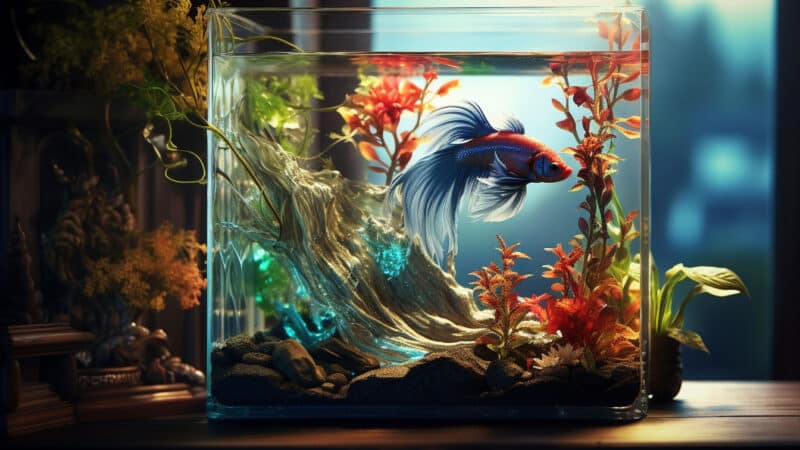
Betta Fish Breeding Tank
Breeding betta fish can be an exciting adventure for any fish enthusiast! To create a breeding environment, you’ll need a separate tank for the male and female betta or use a breeding box inside the fish tank.
The minimum tank size for breeding betta fish is generally considered to be 20 gallons, this allows for ample space for the male and female bettas to establish territories and swim freely, However, larger tanks can be even better, just remember to include an adjustable water heater, air filter, and thermometer, it will provide your bettas with a comfortable and a more stable environment for the breeding pair and their offspring.
When all set, watch the male builds a beautiful bubble nest for the eggs. and when they are ready, slowly introduce the male and female bettas to one another to minimize aggression, After spawning, the male will protect their eggs and fry until they are ready to be released into the tank, in this point you should take out the female from the breeding tank and wait for the magic to happen.
A properly set up breeding fish tank is key for successful betta fish breeding
Betta Fish Essential Tank Equipment
Keeping betta fish happy and healthy requires more than just a beautiful tank. Proper filtration, pH balance, and temperature control are essential for their well-being. An air pump adds oxygen, while lighting provides a natural day-night cycle. Make sure to choose the right equipment for your aquarium size and consider investing in a good water testing kit to monitor the water quality
Water Filtration
When it comes to keeping your aquarium clean and healthy, filtration is key! Lucky for us, there are a few different types of filtration to choose from to keep out harmful bacteria.
First up is mechanical filtration, which removes debris and other physical particles from the water. Then we have biological filtration, which uses helpful bacteria to break down waste products. And finally, there’s chemical filtration, which uses materials like activated carbon to remove impurities from the water.
Some filters even combine different types of filtration, and some even have adjustable flow settings or are made of sponge material for even more customization! No matter which type of filtration you choose, it’ll help maintain the health of your aquarium and its inhabitants.
Of course, cleaning isn’t all about filters. Water changes are also important! Every once in a while, you should be doing a partial water change to remove any dissolved waste and mineral buildup that may have occurred over time. Doing regular water changes will help keep your aquarium’s pH and other levels in balance and your betta fish healthy.
pH Levels
Maintaining water parameters with the right pH level in your betta fish tank’s water is crucial to keep your fishy friend healthy and happy!
Betta fish prefer a slightly acidic environment, with a pH range of 6.5 to 7.5. If the pH level is too low or too high, it can cause stress and even lead to illness. But don’t worry, testing and adjusting the pH level is easy with a pH testing kit and some pH adjusters.
You can use tap water for your betta fish. However, it is important to treat tap water with a water conditioner that removes chlorine and other harmful chemicals, and remember to keep your tank clean.
Water Temperature
The right water temperature in a betta fish tank is crucial to ensure their health and happiness. Betta fish are tropical fish, so they thrive in warm water. The ideal temperature range for a betta tank is between 76 and 82 degrees Fahrenheit.
You can adjust the temperature using a heater and a thermometer to monitor the water temperature. If the water is too cold, your betta may become sluggish, and if it’s too warm, your betta may become stressed. So, keep an eye on the temperature.
Aeration
Air pumps are an essential piece of equipment for betta fish tanks, as they help to keep the water oxygenated and healthy. There are a few different types of air pumps available, including single-outlet pumps, dual-outlet pumps, and adjustable flow pumps. Single outlet pumps are perfect for smaller tanks, while dual outlet pumps are great for larger tanks or for creating multiple air stones.
Adjustable flow pumps are also a popular choice, as they allow you to control the amount of airflow in the tank with an adjustable flow setting.
Lighting
Betta fish do not have a particular preference for lighting. They can thrive in various types of lighting, including natural sunlight, LED lighting, and fluorescent lighting. However, it is essential to ensure that the lighting does not cause excessive heat in the tank and light intensity does not disrupt their natural light and dark cycle.
LED lights are a popular choice for betta tanks because they are energy-efficient and provide a range of light intensities. Different types of LED lights are available, including those that can mimic natural daylight or provide a more subdued ambiance.
The intensity of light required for your betta tank will depend on the types of plants and fish you have in your tank, as well as your personal preference. It’s important to research the lighting needs of your specific tank inhabitants to ensure they are getting the right amount of light.
Substrate and Decorations
Various types of substrate and decorations are suitable for betta fish. For substrate, you can use sand or gravel, which are safe and easy to clean.
You can also add live plants such as java fern, Anubias, or moss, which not only serve as decoration but also provide places to hide and oxygen for the fish. When it comes to decorations, you can add rocks, driftwood, or ceramic structures to create hiding spots and caves for your betta. It is important to avoid sharp or rough decorations that can harm your betta’s delicate fins.
While fake plants may seem like a convenient option for adding colors to your betta fish tank, they can cause harm to your betta’s health and long flowing fins.
Plastic plants have sharp edges that can tear a betta’s delicate fins and cause injury. Instead, opt for silk plants that have a softer texture and won’t cause harm to your fish. Plus, they can provide a natural look and feel to your tank without the risks associated with plastic plants.
In conclusion, setting up the right fish tanks for your betta fish is crucial to the fish’s health
and happiness. The aquarium size, filtration, pH level, temperature, lighting, and tank mates are all important factors to consider when setting up a fish tank, adding suitable substrate and decorations, such as live plants, can enhance the beauty of the tank and create a more comfortable and natural environment for your betta, It’s also important to choose reputable pet stores or breeders when purchasing your fish and equipment.
The aquarium hobby is a wonderful and rewarding experience. That said, it is important to properly research and prepare for your betta’s needs before bringing them home. Doing so will ensure that you are providing the best possible environment for your betta fish to thrive in. With the right setup, your betta will be a happy and healthy pet fish.
Happy fish keeping Y’all

Delighted to have you here at BettaReef! This place is a treasure trove of knowledge about Betta fish, Betta Care, Health, Gear, and much more from the wonders of aquatic life. My journey in this fascinating world began when I was just 8, and now, as a seasoned hobbyist, I’m here to help fellow Betta enthusiasts create a thriving Betta environment for a healthy life.
I’m committed to delivering high-quality content, backed by a stringent editorial process. Each product review is based on real-life usage and practical analysis, ensuring that you get insights and advice that truly matter.
Related Blog Posts:
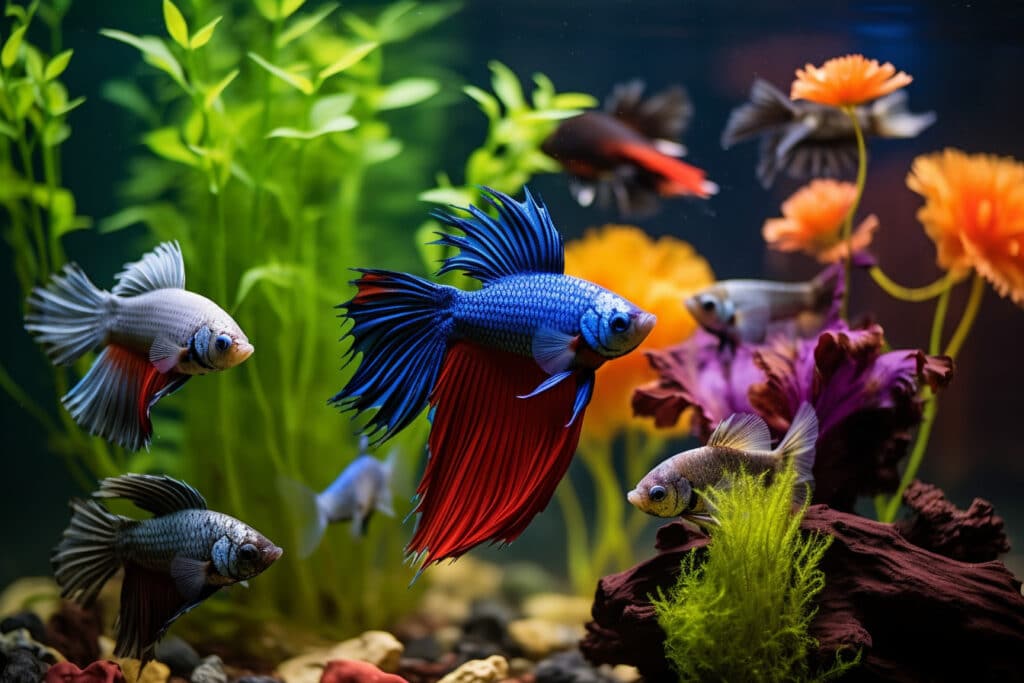
How to Keep a Betta Fish Happy
Swim To 🤿 Home How to Keep a Betta Fish Happy Are you a proud
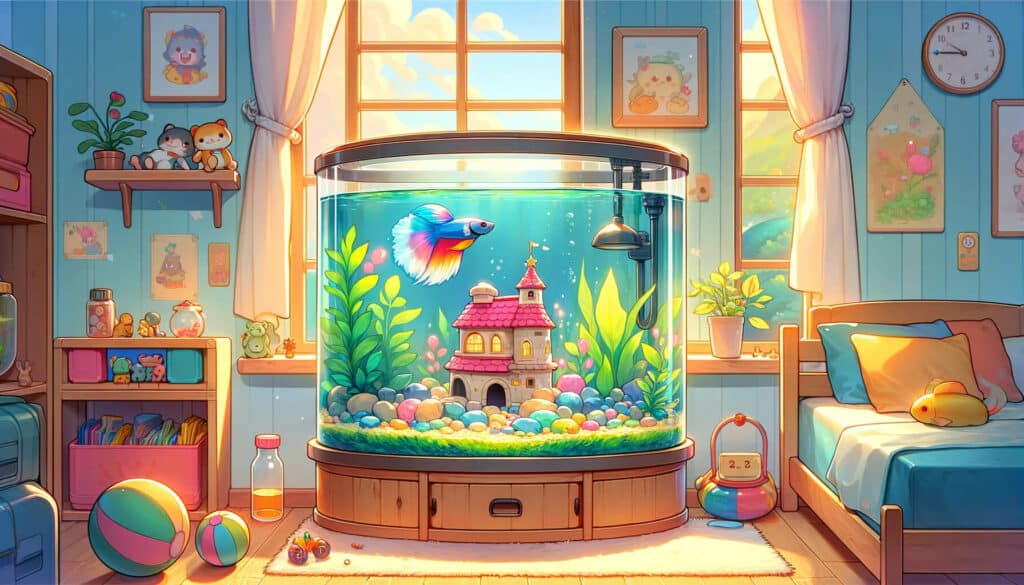
The Best 10 Gallon Fish Tank For Betta Fish
The Best 10 Gallon Fish Tank (38 L) For Your Betta 🐠🏰 Welcome to BettaReef,
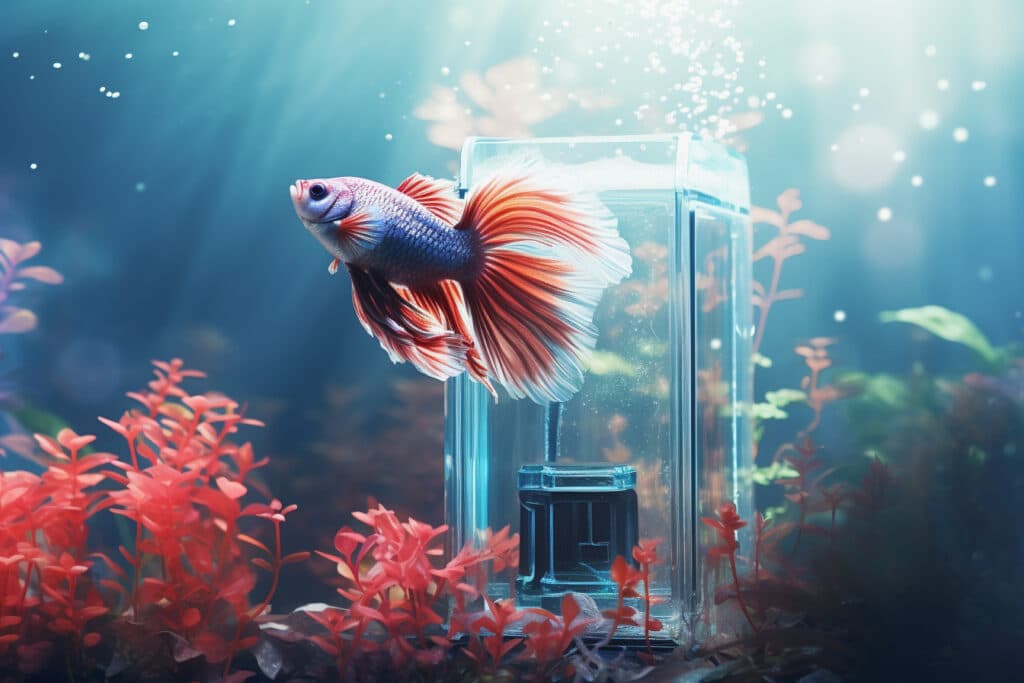
Do Betta Fish Need A Filter
Do Betta Fish Need A Filter? One of the main questions we get is “Do
